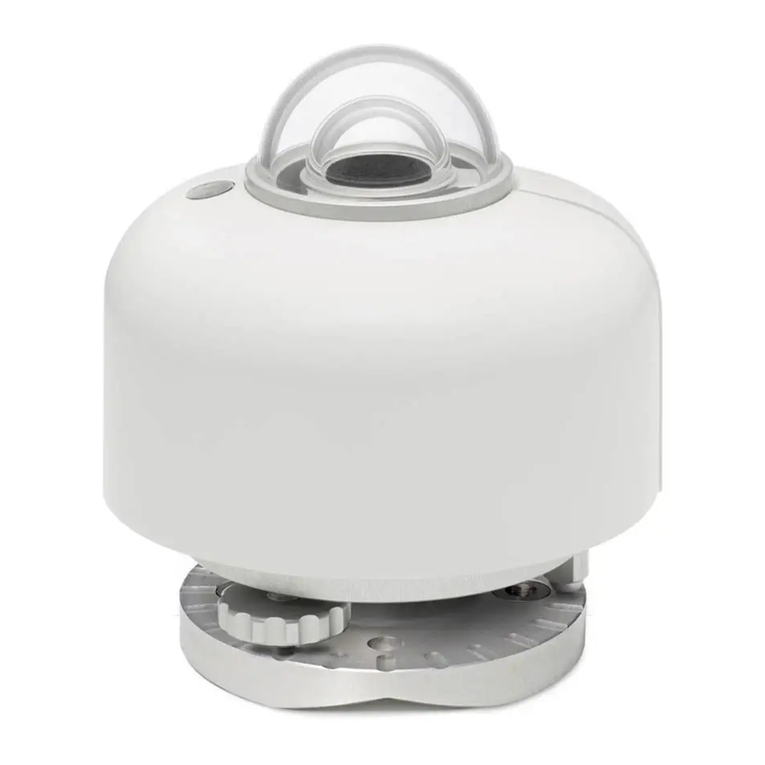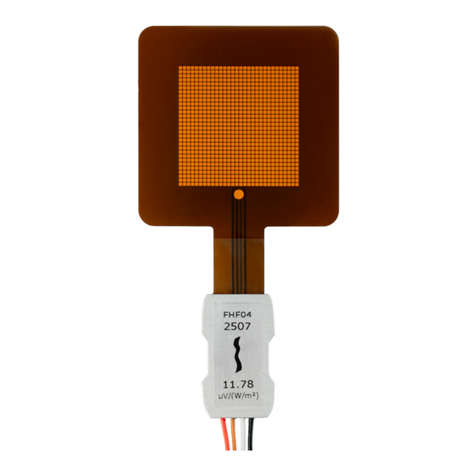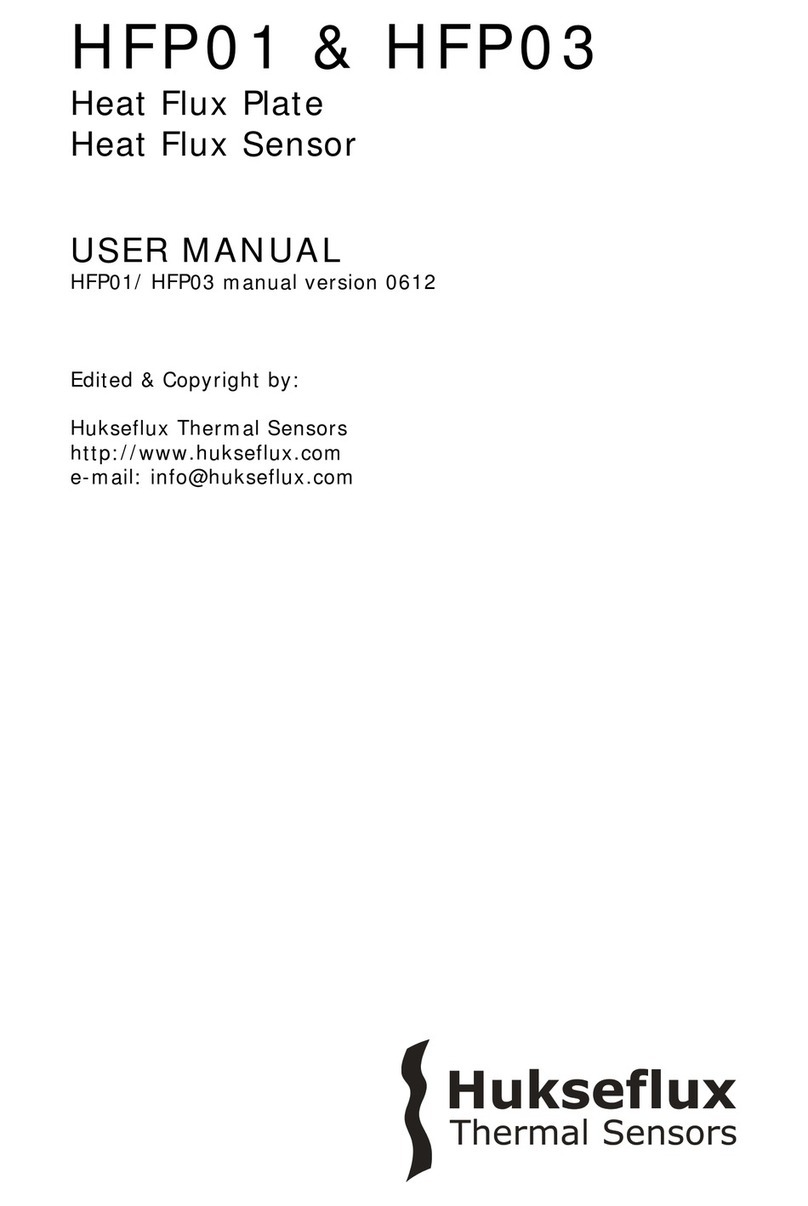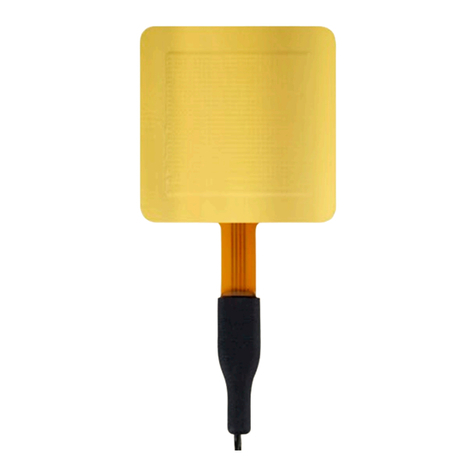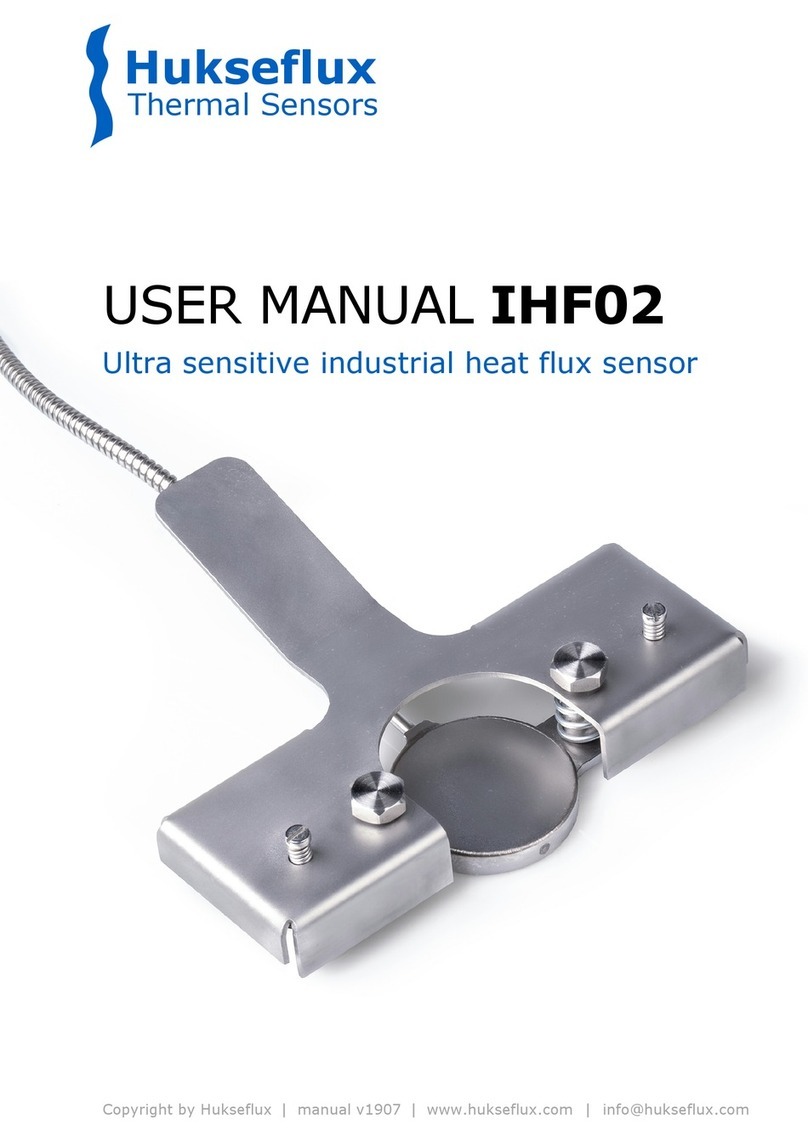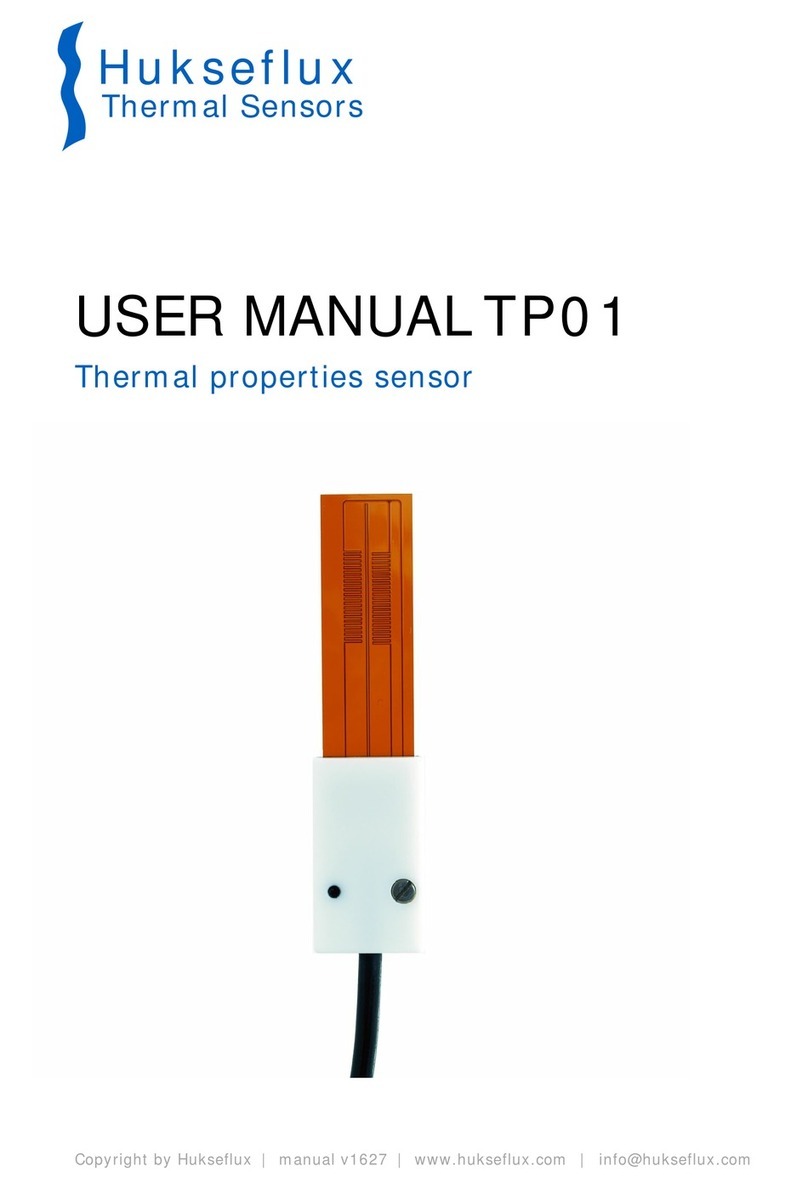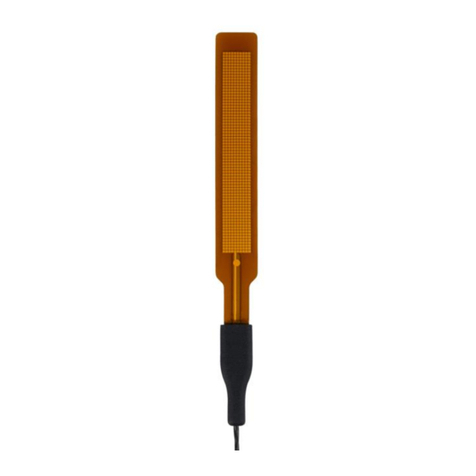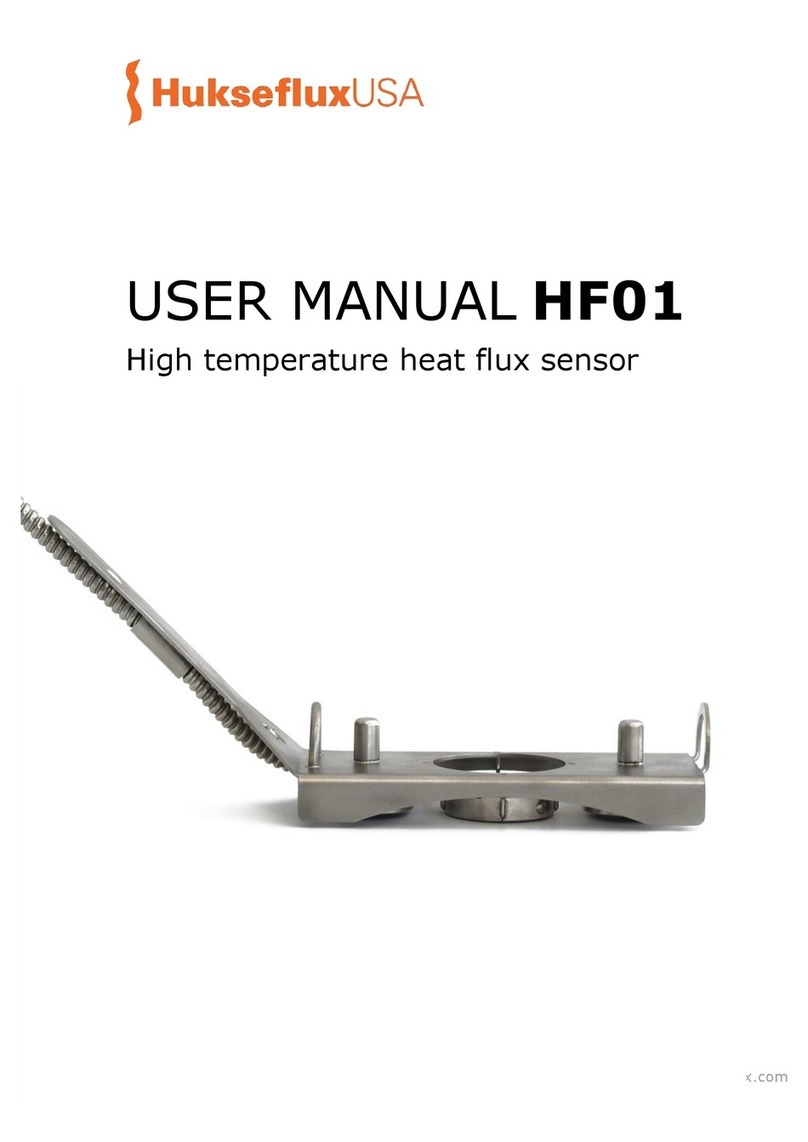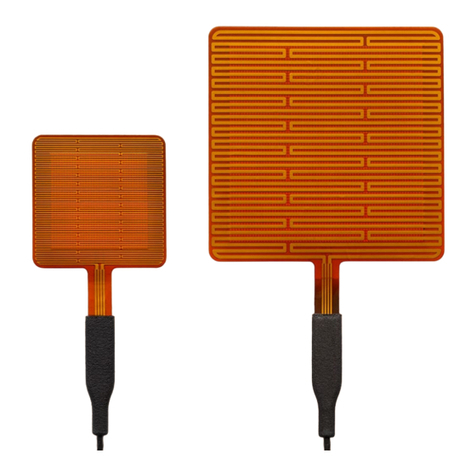FHF03 manual v2108 10/35
2Instrument principle and theory
FHF03’s scientific name is heat flux sensor. A heat flux sensor measures the heat flux
density through the sensor itself. This quantity, expressed in W/m2, is usually called
“heat flux”.
FHF03 users typically assume that the measured heat flux is representative of the
undisturbed heat flux at the location of the sensor. Users may also apply corrections
based on scientific judgement.
The sensor in FHF03 is a thermopile. This thermopile measures the temperature
difference across the polyimide body of FHF03. Working completely passive, the
thermopile generates a small voltage that is a linear function of this temperature
difference. The heat flux is proportional to the same temperature difference divided by
the effective thermal conductivity of the heat flux sensor body.
Using FHF03 is easy. For readout the user only needs an accurate voltmeter that works
in the millivolt range. To convert the measured voltage, U, to a heat flux Φ, the voltage
must be divided by the sensitivity S, a constant that is supplied with each individual
sensor.
Figure 2.1 The general working principle of a heat flux sensor. The sensor inside FHF03
is a thermopile. A thermopile consists of a number of thermocouples, each consisting of
two metal alloys (marked 1 and 2), electrically connected in series. A single
thermocouple generates an output voltage that is proportional to the temperature
difference between its hot- and cold joints. Putting thermocouples in series amplifies the
signal. In a heat flux sensor, the hot- and cold joints are located at the opposite sensor
surfaces (4 and 5). In steady state, the heat flux (6) is a linear function of the
temperature difference across the sensor and the average thermal conductivity of the
sensor body (3). The thermopile generates a voltage output proportional to the heat flux
through the sensor. The exact sensitivity of the sensor is determined at the manufacturer
by calibration, and can be found on the product certificate that is supplied with each
sensor.

